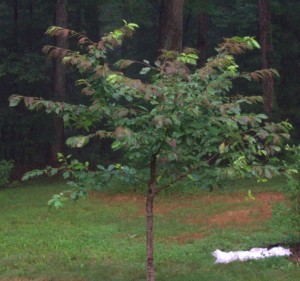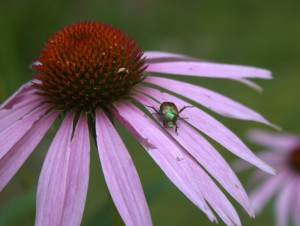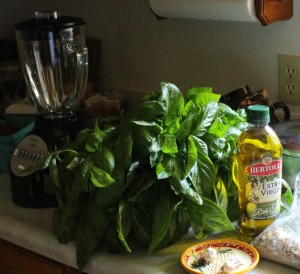Leaf Skeletons Evidence Beetle Damage
Every time we see Japanese Beetles on plants around here the leaves appear to have similar damage regardless of what plant serves as their perch.

I’m not sure what makes the fleshy green parts of a leaf taste “good” to a beetle, but that’s definitely their preference, if it comes down to that.
Maybe their mouth parts can’t handle the structure of the leaf ribs or maybe the stemmy parts don’t have the right flavor – can beetles taste their food and do they have a tongue? So many questions, so little time!

By skeletonizing we mean all the fleshy green parts of a leaf are eaten and the ribs remain. Only the shape of the leaf or outlined structure is left intact and the remainder of the leaves turn brown.
Damage by Japanese Beetles extends to blackberry, basil, cherry, purple cone flowers, roses, and many others.
How To Get Rid of Japanese Beetles

Get rid of Japanese beetles by knocking them off their perch into a pail of soapy water.
